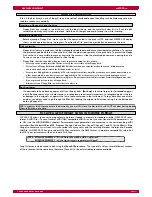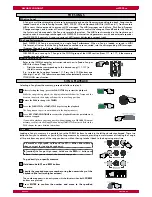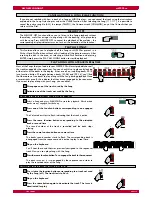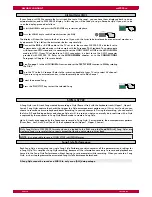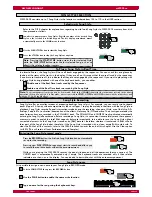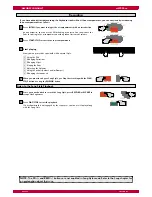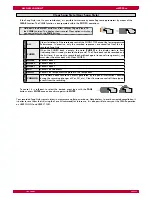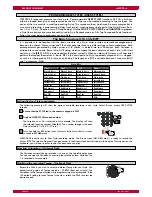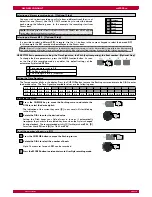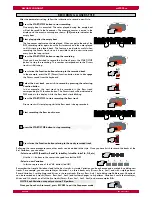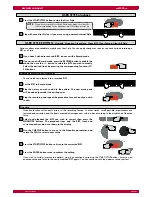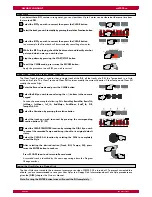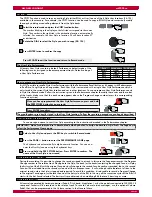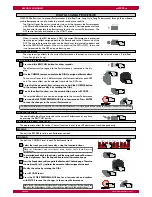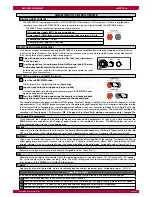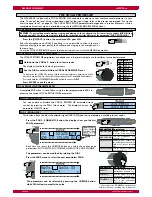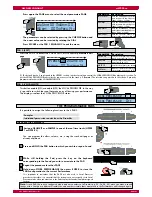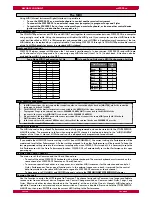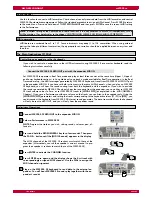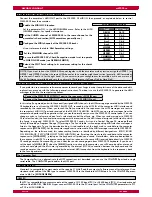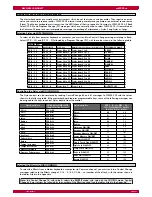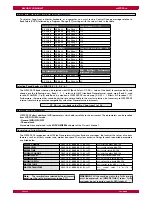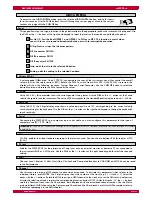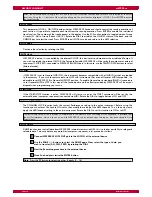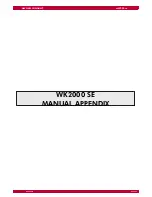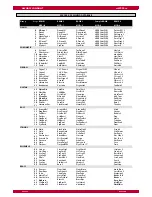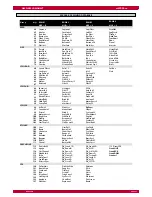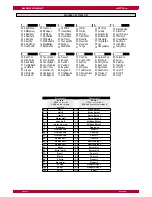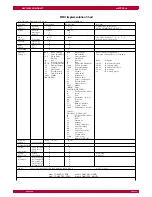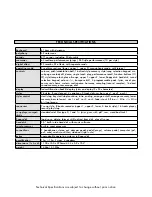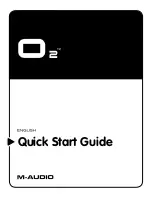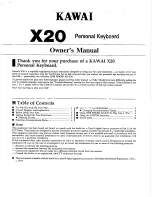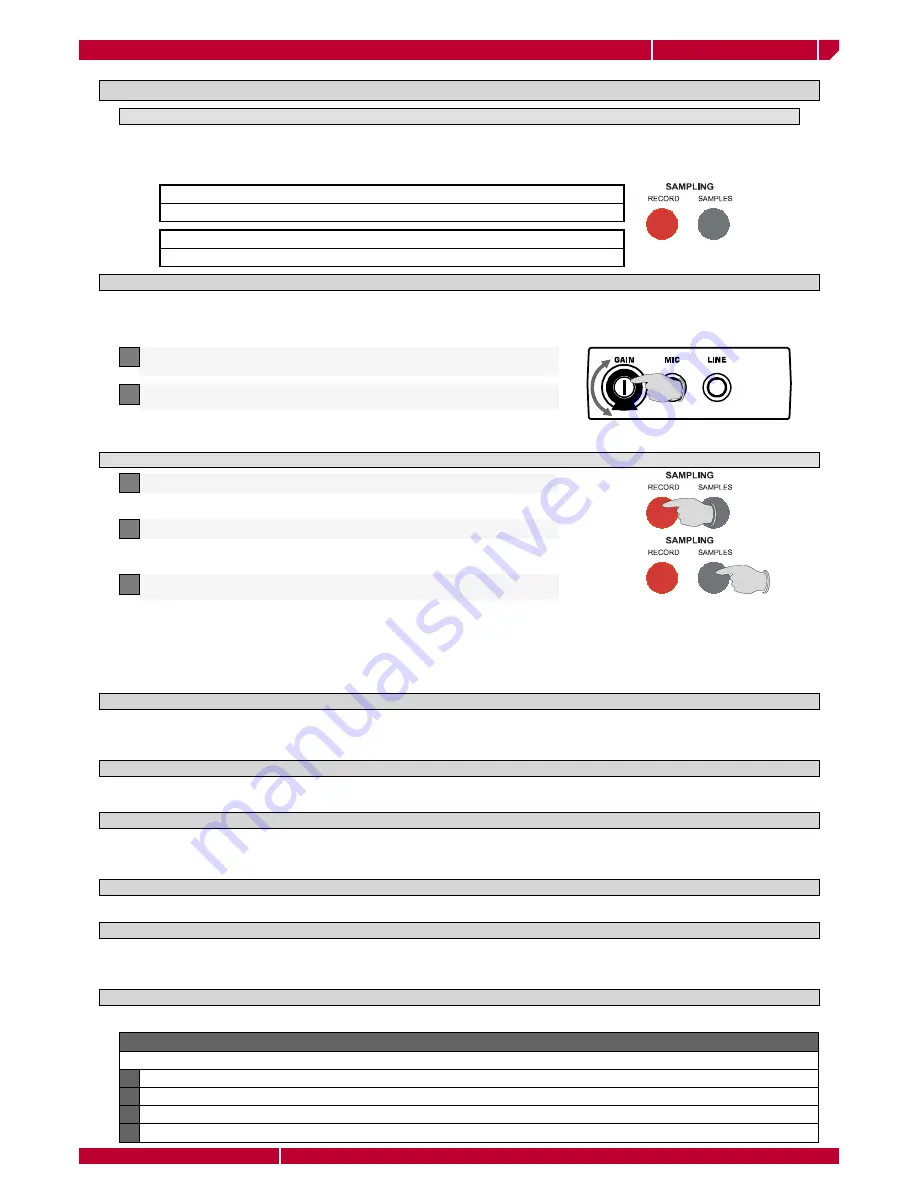
owners
manual
wk2000 se
Page45
sampling & vocal processor
SAMPLING/VOCAL PROCESSOR
The WK2000 SE is equipped with the a VOCAL PROCESSOR interface, in this way you will have a digital audio
sampler at your disposal. WK2000 SE is able to sample two types of signal through the MIC/LINE inputs:
DIGITAL AUDIO SAMPLER
WK2000 SE vocal processor/sampler has these features:
A singer (or musical instrument) can exploit WK2000 SE’s internal amplifi cation system by plugging into the Mic/Line
inputs of the Vocal Processor. The signal is fed to the instrument’s main mix and processed by means of specifi c controls
then sent to the outputs (speakers and stereo outputs).
The sample is memorised directly to the SAMPLES group. To select Samples via MIDI, refer to the MIDI chapter, or use the
Appendix tables. The SAMPLES group corresponds to the battery-backed Sample RAM which maintains data after turning
the instrument off. To safeguard your sample against cancellation, save your Samples to Floppy disk (or Hard Disk) using
the procedures explained in the Disk chapter. Every time you carry out a sampling operation, the entire RAM available for
sampling is utilized (approx. 100 Ksamples).
NB
.
A fl oppy disk (or Hard Disk) partition can contain only 1 sample fi le.
SET UP THE MIC/LINE SIGNAL LEVEL
At this point, you are ready to either sample the signal or activate the vocal
Processor (vocal harmonizer)
Plug a Microphone or audio cable into the Mic. Jack (or an instrument
to the Line jack)
1
Trim the signal level using the small twin GAIN control knob. The twin
knob independently controls the Mic and Line signal
2
SAMPLING procedure and SAMPLE selection
Press the red RECORD button
1
The display shows the fl ashing screen:
[Sampling]
Input a signal into the microphone (Sing or speak)
2
If something goes wrong during the sampling, press the RECORD button
again and repeat the operation.
Press the SAMPLES button and assign the Sample to a keyboard track
using the normal sound assignment procedure already explained.
3
Once captured, the Sample can be edited by means of specifi c editing parameters. As soon as you have sampled, the
PAGE
buttons are enabled for the change of page relating to the sample edit functions. The
DIAL
modifi es the value of
the parameters shown in the 3 digit display area.
Applies a fi ne tune to the sample, up to one semitone above or below the actual pitch. Assignable values: -8/0/+8.
The Sample Edit parameters
Allows you to control the Reverb level in sample. The Reverb effect applied depends on the Reverb Type selected in the Reverb
DSP unit. The amount of Reverb applied can vary from 0 (sample with no effect) to 15 (sample with maximum effect).
REVERB
CHORUS
Allows you to control the amount of Chorus (or other modulation effect) applied to the sample. The amount of Chorus
effect applied can vary from 0 (sample with no effect) to 15 (sample with maximum effect).
NB.
Check that the CHORUS
display indicator is shown is selected to hear the changes applied to the parameter. Assignable values: from 0 to 15
VOLUME
Determines the general volume of the sample. Assignable values: from 0 to 16.
PAN
Determines the position of the sample within the stereo panorama. Assignable values: L31 (all to the left) . 00 (centre) .
R31 (all to the right), Mute (does not play). Note: The MUTE setting produces some interesting effects when you listen to
the Sample with the REVERB and CHORUS effects active.
TUNING
Cancelling samples
You can clear the Sample-RAM of all Samples with the INITSmp function found in the MIDI/GENERAL pages.
1
Move the arrowhead next to the MIDI/GENERAL menu function.
2
Press the PAGE buttons as many times as necessary until you reach the INIT page, showing the default ALL option.
3
Use the DIAL or the +/- buttons of the right hand selection keypad to select the INITSmp option.
4
Press ENTER to confi rm, or ESCAPE to cancel the operation and exit the function.
•Microphone signals (MIC) from a microphone.
•Line signals (LINE) from a musical instrument, tape recorder, CD, etc.
•Sampling resolution : 16 bit
•Sampling time : approx. 6 seconds

